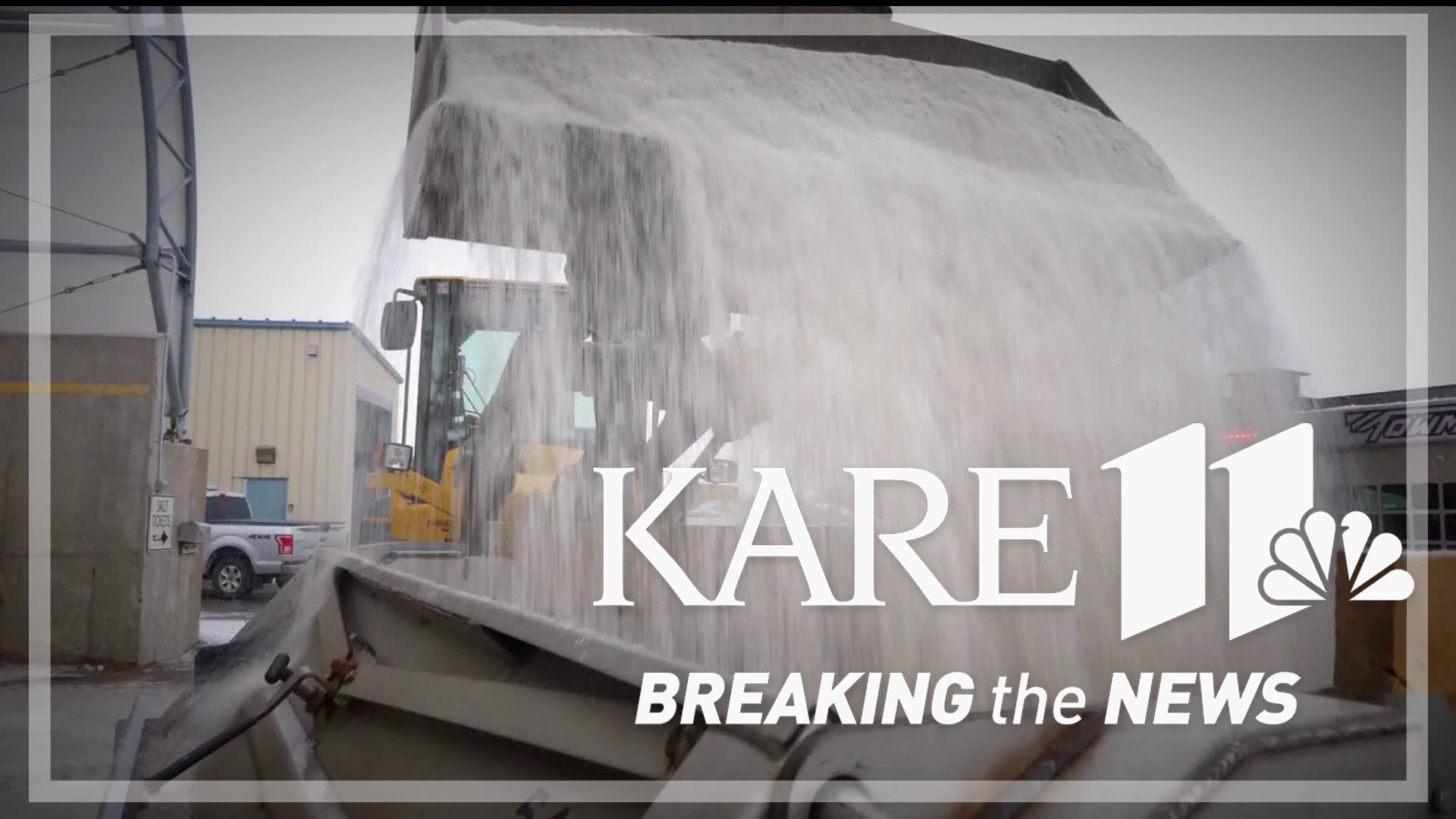MINNEAPOLIS — The return of winter might have you feeling stressed and a little salty, but it probably doesn't compare to the stress that road salt is having on our infrastructure and watersheds.
According to the Metropolitan Council, 42 Twin Cities waterbodies are contaminated with excess chloride, but Judy Sventek, manager of Water Resources and Environmental Services for the Met Council, says the number is likely even higher because many more are not currently monitored.
Sventek: "In almost every stream that we monitor, we have seen increasing chloride trends, and most of the streams we've been monitoring since about 1990."
Kent Erdahl: "Why is chloride getting into the streams dangerous?"
Sventek: "It's harmful to the aquatic ecosystem. It impacts the ability of the fish and the aquatic organisms to survive."
According to an annual report of chloride levels in 18 streams in the Twin Cities region, three are considered impaired. They include Nine Mile Creek in Bloomington, Basset Creek in Minneapolis and Battle Creek in St. Paul. Two other streams are considered high risk for impairment, while nearly all of those that remain have registered concern increases in chloride.
Erdahl: "If it's getting into the streams, where is it going from there? Is it getting into the Mississippi and into the lakes too?"
Sventek: "Exactly, this study focused on the streams, but we are monitoring chloride in some of our lakes and they are getting saltier as well."
According to the Minnesota Pollution Control Agency, at least 50 bodies of water across the state now have chloride levels that exceed standards to protect fish and other aquatic life, with another 75 nearing that standard.
Though chloride can come from several sources, including household water softening and synthetic fertilizers, the vast majority is coming from de-icing salt.
Erdahl: "Is the bulk of that coming from treatment of roads by cities or by the state?"
Sventek: "It's treatment of roads; it's parking lots; it's sidewalks that we're standing on right now. That goes far beyond just the local and state government."
Sventek says cities and MNDOT have actually been reducing their use of de-icing salt for several years, thanks to more precise timing and application offered by smart technology on vehicles, and the use of brine mixtures that help reduce runoff from roads.
Still, she says, chloride pollution continues to trend upward, with private businesses and individuals a big remaining challenge.
"It's really important to get the word out about how they can do what we call 'smart salting,'" Sventek said.
Minnesota Pollution Control offers Smart Salt Training that promise to help businesses and contractors salt use by 30 to 70 percent.
You might need actual training if you're just salting your own driveway or sidewalk, but if you want to do your part, the Met Council has a fact sheet with some quick tips including:
1. Shovel the area before applying de-icing material.
2. Use just a half a cup or less for each 10 sidewalk squares.
3. Consider cleaning up after clearing the surface.
Sventek: "After the snow melts, if there is a lot of salt just sitting around, you can sweep that up or you can reuse that or at least get it off of the surfaces. That way, if we have a rain event or a snow melt event, it will not be taking that excess salt that wasn't used for anything."
Erdahl: "Is it possible to get chloride out of the water?"
Sventek: "No, there's not really a good treatment for chloride except for something like reverse osmosis, which isn't practical. So you really want to focus on keeping the chloride out of the water and from getting into the water in the first place."
Watch more Breaking The News:
Watch all of the latest stories from Breaking The News in our YouTube playlist:

